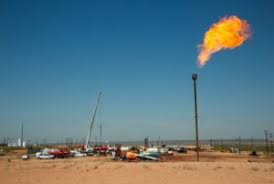
The American Petroleum Institute’s Environmental Partnership announced the launching of a performance program focused on reduction of flaring in upstream operations.
The API said the flare management program is an expansion on the Partnership’s core mission which recently added midstream operations. It also represents more than 70% of total onshore U.S. oil and natural gas production.
“This new Flare Management Program is another tool that will deliver invaluable data to better understand the cause, our progress, and inform the future actions needed to minimize flaring,” said Mike Smith, EHS professional at Oklahoma City’s Devon Energy, and lead for the flare reduction effort.
Director for The Environmental Partnership Matthew Todd said, “This commitment to reduce flaring builds on the industry’s progress in reducing methane emissions and is the latest example of how companies are constantly innovating to improve environmental performance while delivering affordable, reliable energy around the world.”
To gauge progress from year to year, participants of the Flare Management Program have committed to report data to calculate flare intensity, a measurement of flare volumes relative to production. The program will analyze and aggregate this data for its annual report and utilize the insights from the participant’s combined actions and reporting to better understand and identify additional opportunities for the industry to further reduce flaring.
As part of the new program, companies will advance best practices to reduce flare volumes, promote the beneficial use of associated gas, and improve flare reliability and efficiency when flaring does occur. Flaring is typically used when there is a lack of gas gathering lines or processing capacity, during facility or gathering maintenance, or during unplanned events for safety measures to alleviate pressure. In these instances, flaring is the safer environmental option. Rather than venting the gas into the air, flaring burns the gas, which releases fewer greenhouse gases than venting.
Source: API






